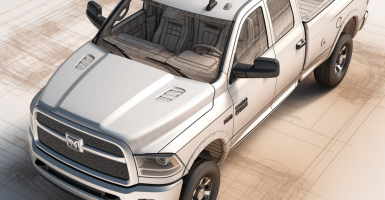Why Car Shortages Are About To Get Way Worse
If you think car shortages are bad now, think again, experts warn that the problem is about to get way worse.
This article is more than 2 years old

You may have noticed that when you drive by a car dealership lately, the cars on the lot are primarily not from that manufacturer. Instead, you find lots filled to the brim with used vehicles of every make and model. This unusual shift is due to the global automotive chip shortage. And the news just hit that car shortages are about to get worse rather than better.
The global semi-conductor shortage became a significant problem for car manufacturers during the pandemic. With shutdowns, plant closures, and labor shortages across industries, production slowed to almost a halt. The slow production and disruption to the global supply chain resulted in shocking car shortages.
First, the dealership lots grew emptier and emptier. If you spoke to any of the salesmen working during this period, you would have discovered that no one knew when deliveries of new vehicles would come. Then, the lots started filling up with used cars. The demand for used vehicles grew as new ones were nearly impossible to find. But many believed car shortages would be temporary.
With the news of another 100,000 cars cut from North American production plans this week, it seems as if car shortages are here to stay. Globally, 180,000 vehicles are set to get cut from production this week. That means that North America is the hardest hit region.
Those numbers don’t seem that large on face value. It is not enough to suggest even worse looming car shortages, right? Unfortunately, those numbers are just production cuts for a single week. The broader picture is bleak and is getting worse. Car shortages thus far in 2022 alone are at an incredible 1.06 million vehicles.
Even worse are the forecasts for the rest of the year. Industry experts believe car shortages will grow far worse. The expectation is that, worldwide, 3.8 million vehicles will get cut from production lines by the end of the year.
The chip shortage is not just impacting the number of vehicles produced. It is also negatively impacting vehicles still in production. In the fall of 2021, General Motors started removing features such as heated seats and steering wheels from their vehicles due to the lack of chips. Ultimately, consumers were paying the same high price for their car or truck without the additional benefits we’ve all grown accustomed to.
The news is dire for the automotive industry, which struggled even before the chip shortage. With analysts predicting that there is no foreseeable end in sight, where does that leave these companies and their customers? At this point, the car shortages will continue to drive consumers toward used vehicles. The high demand offsets lost sales to a small degree, at least.
The future of the automotive industry will hinge on how quickly the global chip shortage turns around. Industry experts believe we will continue to see growing car shortages through at least 2023, if not longer. So, take good care of your current vehicle, as it will grow increasingly difficult to replace.








